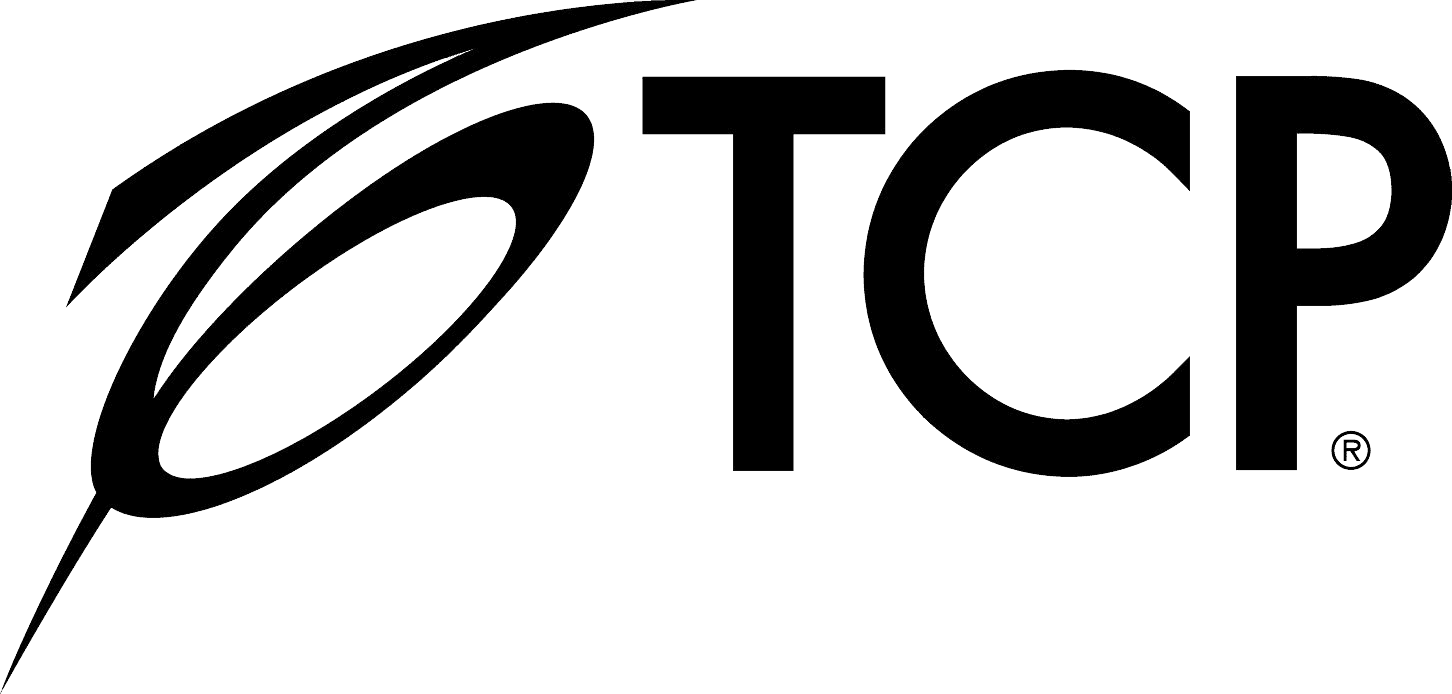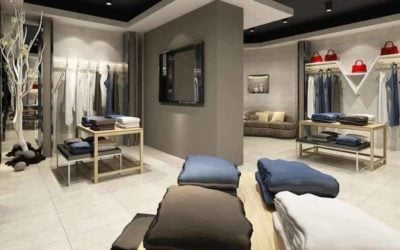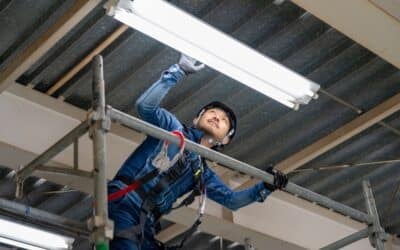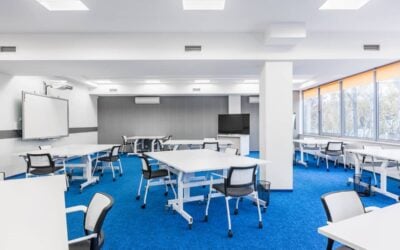The Benefits of LED Lighting in School Facilities
History of Lighting
Prior to the 1930s, schools were lit with all daylighting due to the lack of artificial lighting available. Then starting in the 1930s and continuing through 1945, architects were highlighting the significance of incorporating natural air in schools— this started the “open air” school movement. To ensure the psychological and physiological wellbeing of students, more schools were implementing outdoor activities and physical health exercises.
During the post-war boom from 1945 to 1960, the focus turned to lighting, heating, acoustics, ventilation and other important elements in schools. This was the start of the evolution of economically friendly fluorescent lighting options for schools. More recently, research has shown that fluorescent lighting could propose various negative effects on students. The solution? LED lighting.
Saving Money (and the Planet) with LED
Unlike fluorescent lighting, LEDs are mercury-free and are 100% recyclable—making them the most environmentally safe lighting option. Using less energy than any lighting technology on the market, LEDs will cut energy and maintenance costs drastically.
When overviewing a school’s expenses, energy is one that can be decreased without negatively impacting student learning. By replacing a T12 fluorescent tube with a LED T8, a facility can reduce its energy consumption by 35 percent. Then adding options such as reflectors, lenses, sensors and timers can increase the savings even more.
Many of the education facilities throughout the United States that still operate using fluorescent, or even incandescent, spend more money trying to compensate for the heat generated from outdated fixtures than the fixture itself. These expenses could be used towards other areas of the facility that need more attention. A lighting upgrade could reduce energy the facility uses for lighting by 30 to 50 percent and 10 to 20 percent for cooling.
For schools looking to install LED lighting, make sure to take all the necessary steps to ensure a successful and cost-efficient upgrade.
- CONDUCT AN AUDIT: Gather your facility’s energy consumption data and present to your administration’s decision-makers to secure their support on the project.
- MOCK-UP: When you have your administration’s support, mock-up an area of the school with the LED lighting proposed in the lighting plans.
- REBATES: Talk to your local distributor or representative to find possible utility rebates.
- FUNDING: This could be the hardest part in some situations. Some schools ma not be able to afford an entire lighting upgrade all at once. Your lighting upgrade could require phases, which would take more time to complete the whole upgrade.
Protecting Students’ Health and Wellbeing
Lighting can have many positive, and unfortunately, negative impacts on student health and wellbeing. Some of the benefits of LED lighting in schools are the improvements of school safety and the reduction of eyestrain and other difficulties associated with lighting.
Harmful Contaminants
Installing newer LED light fixtures can reduce the risk of exposure to harmful contaminants such as Polychlorinated Biphenyls (PCBs). According to the U.S. Environmental Protection Agency (EPA), PCBs are carcinogens that can lead to health effects on the immune, nervous and endocrine systems and can be found in the magnetic T12 fluorescent ballasts. These ballasts can leak or rupture, but some can even emit some small amounts of PCBs throughout normal use of the fixture. The EPA also announced that schools in the United States that were built before 1979 may still have PCB-containing T12s. Exposure to these contaminants occur when you breathe in the contaminated air or touch contaminated materials after a leak or rupture. When exposed to high levels of PCBs, people can show signs of acne or rashes, and even liver and lung problems (Studies are still being conducted to determine the affects of PCBs on human health).
Another harmful contaminant contained in outdated lighting technology is mercury. Fluorescent lighting contains combinations of mercury and inert gases when the current runs through the tube. Depending on the type of exposure, mercury can enter the body through the lungs or skin. In the event of a shattered fluorescent tube, anyone is prone to mercury contamination; making fluorescent tubes a safety hazard in school facilities. Another hazard of mercury is its production of UV light. UV radiation can cause damage to plastics as well as tissues in our eyes and skin. Too long of exposure to UV radiation can cause cataract formation and can also contribute to macular degeneration—the number one cause of blindness.
Light Quality
Many students who enter school already have visual problems—i.e. focusing, eye tracking, training, lazy eye, strabismus, etc. It’s important to not make it more difficult for those students to properly see all areas of the classroom as well as ease of navigating the rest of the school.
Glare and flicker can also negatively impact not only the students, but the teachers as well. Glare can cause students and teachers to squint, blink or look away. It’s caused one of two things: luminance is too high, or luminance ratios are too high. When one of these is occurring, visual performance will be decreased and discomfort will be increased.
There are two types of glare: discomfort and disability glare. Discomfort glare is the annoying sensation or pain caused by glare, while disability glare reduces visibility. Disability glare is caused by light being scattered in the eye, which then reduces luminance contrast of the retinal image.5
Fluorescent lighting has also been shown to bother students with autism. People with autism tend to have sensitivity to the sub-visible flicker of direct fluorescent lighting. This can cause headaches, eyestrain and increased repetitive behavior. LEDs do not flicker when fully dimmed, making them a great option for special education classrooms.
Color temperatures also play a huge role in the health of students. Studies have shown that cool color temperatures (4100K – 5000K) can improve the behavior of students who are hyperactive or have learning disadvantages. The cool light color helps them focus and concentrate on tasks and projects. Hyperactivity is also related to a radiation stress condition, and the radiation emitted from fluorescent lighting fixtures can make it worse. When exposure to this radiation is reduced, behavior and performance can improve.
Another important biological function that depends on proper lighting is our circadian rhythm. It helps our bodies determine when to wake up, when to go to sleep, and even when to concentrate and when to relax. Without proper lighting that matches our circadian rhythm, our sleep-awake cycle can get thrown off. Students who aren’t getting enough sleep will not be able to perform to their full potential in the classroom.
Providing Psychological Stability for Students
Utilizing LED lighting properly can boost focus, assist in concentration and relaxation and improve overall mood and behavior in students.
As discussed in the last section, circadian rhythm not only has an impact on student productivity and physical health, but it also impacts mental health. Cooler color temperatures in the morning hours will help students wake up and focus on their schoolwork. Helping students become more alert will help their mental cognition and ability to learn and comprehend material.
Like color temperatures, light levels are also very important in the classroom. Bright lighting is used to treat various types of depression including Seasonal Affective Disorder (SAD), or the “winter blues”. This happens usually during the winter months when people aren’t exposed to enough sunlight during the day and is very common in school and office environments. Spending too much time in a dimly lit room can negatively affect mood and cause someone to feel depressed. That’s why bright lighting is so useful for depression treatments—it helps encourage bright and cheery moods. Dim lighting can also negatively impact what information is received and stored in the brain. If it is too dim to read, the wrong information might be read and sent to the brain.
A recent study has shown that artificial lighting that stimulates daylighting can increase concentration and cognitive performance in students. The research in this study found that the lighting provided stimulation to the body that mimicked being outdoors. To help students become more alert earlier in the day, this caused their circadian rhythms to shift forward (in time). Some students were even able to tell a difference in their mood and concentration. Daylighting has also been shown to improve mood, mental performance, alertness and brain activity, while decreasing depression, stress, sadness and violent behavior.
Creating a Productive Learning Environment
Proper lighting in schools can have numerous positive impacts on student productivity. It can create a more effective learning environment, which can lead to improved test scores, enhanced learning and increased overall student productivity.
As mentioned in previous sections, color temperature can impact students’ visual skills—this directly influences academic performance. Students should be able to switch between areas in the room without any visual interruption or changes due to lighting.
Sticking to these recommendations and adjusting the classroom lighting throughout the day will also help match students’ biological clocks and keep them productive.
A study conducted by Dr. Michael Schulte-Markwort, Director of the Clinic for Psychosomatics in Children and Juveniles at the University Medical Centre Hamburg-Eppendorf studied 166 children, ages 8-16 and 18 teachers to determine the effect of light on learning behavior. Teachers had four light control options:
- NORMAL – for regular classroom activities
- ENERGY – to invigorate when children need to be more active
- FOCUS – aid concentration during challenging tasks
- CALM – to relax during individual work or quiet time
He found that these lighting control settings had great results on the students:
- Increase in reading speed 35%
- Drop in frequency of errors 45%
- Reduction in hyperactivity using the CALM setting when given mathematical problems. 76%
Installing LED lighting in school facilities is detrimental to the health, safety and academic performance of its students. There are many elements in a school that impact student learning, such as noise level, scheduling, classroom design, sleep time and more. These can’t easily be controlled, but lighting is an aspect that can be changed to improve students’ learning and their environment.
Learning and development occur in stages, and lighting can play a huge role in those stages: physical, cognitive and socio-emotional development. Starting with motor skills, moving toward how our brain functions and then establishing a sense of self and relationships with other people. Lighting affects multiple areas of our lives; it shapes how we sleep, our mood and our motivation and concentration. That’s why it’s vital to pay close attention to the lighting in schools, and change those lighting systems to improve the lives of today’s students.
Related Articles
Enhancing Retail Spaces with LED Lighting Solutions
Effective retail lighting is essential for attracting and retaining customers, as it influences customer behavior, mood, and overall shopping experience. The Impact of Light Design on Customer Behavior Lighting plays a pivotal role in shaping how customers interact...
Lighting Maintenance in Industrial Facilities
Managing a warehouse facility is more than just keeping shelves organized. The lighting that constantly surrounds the people and products play a big part in the well-being of the business. Lighting maintenance in industrial facilities helps ensure safety, reduce...
Improve Learning Environments with LED Lighting Solutions
Creating an optimal learning environment requires more than just desks and whiteboards – lighting plays a crucial role in shaping students' focus, energy levels and overall well-being. Schools that insist on high-quality LED lighting solutions can enhance student...







